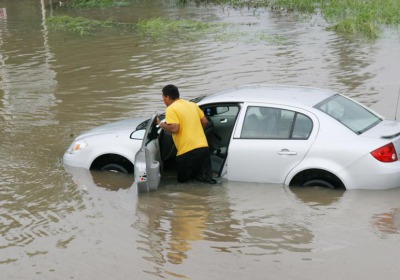Used-car shoppers should watch out for potential flood damage
Mon, 06 Jun 2011
Heavy spring rains swelled rivers such as the Mississippi and flooded numerous towns. You might have stayed dry, but there's still a risk of being affected--if you wind up with a flood-damaged car.
Large sections of the Midwest and the Southeast flooded because of heavy winter snow and an especially wet spring.
As owners try to salvage any worth from submerged vehicles, survivor cars and trucks will likely trickle into the used-car market during the next 12 months.
At the same time, the supply of used cars is down as the economic recession prompted people to hold on to their cars. That factor is pushing used-car prices higher, increasing the temptation to profit by selling a car with undisclosed flood damage.
Buyers of flood-damaged cars could eventually see problems sprout up with engines, fuel systems, electronics, airbags and brakes.
"A car that's been in a flood, with the engine submerged for any length of time, will never be the same," said Carl Sullivan of AiM Mobile Inspections of Long Beach, Calif., a car-inspection service.
Many states issue a flood or salvage title to a vehicle that has been through a flood. Shoppers can usually find this information on a vehicle-history report.
Auction chain Manheim, which sells cars at wholesale prices to dealers and also runs public sales, said it makes sure that vehicle conditions are disclosed before a sale is completed. In compliance with the National Auto Auction Association policy, Manheim asks sellers to point out any flood damage.
Still, the auction association's water-damage policy is a recommendation, optional for auction companies. Having a professional inspection agency check the car or truck for any problems could be a shopper's safest best.
Sullivan suggested watching for these signs of flood damage:
-- Water or condensation in the headlights or taillights.
-- A musty odor in the cabin or moisture under the carpeting.
-- Mud in the seatbelt tracks or tensioners.
-- Water in the spare-tire well in the trunk.
-- A sagging headliner in the interior, especially on a late-model vehicle.
-- Corrosion under the car--on the brake lines, around the fuel tank, near the top of the springs or shock towers. (This is different from the road salt often found on the frame rails of cars in the Snow Belt.)
Sullivan noted that shoppers should also look under the seats.
"I found two fish under a back seat once," he recalled. "That was a pretty sure sign the car had been flooded."
By Michelle Koueiter

